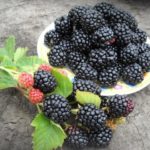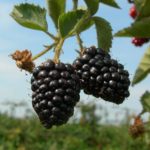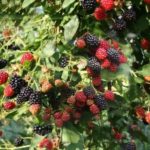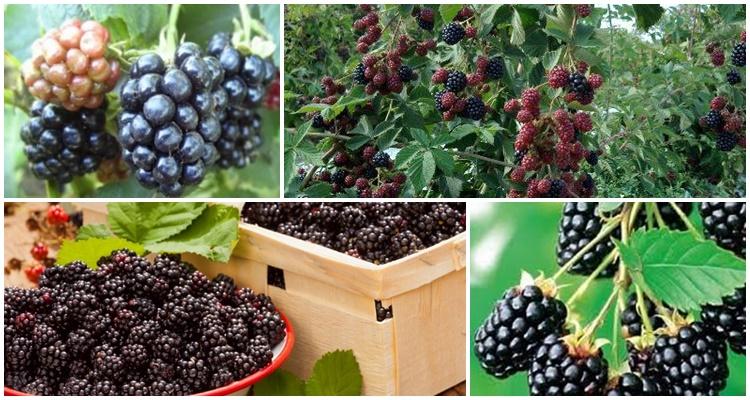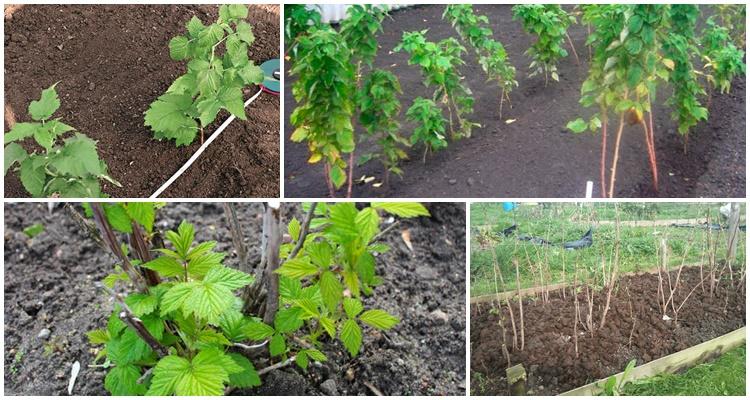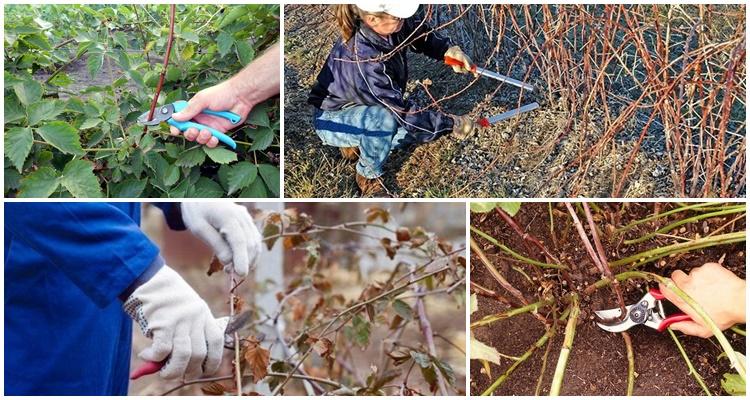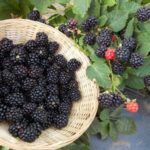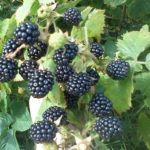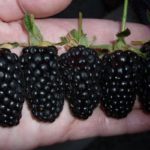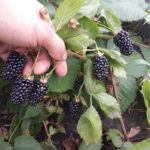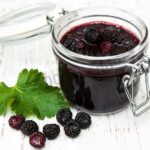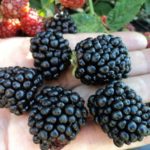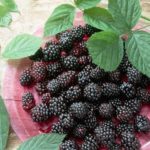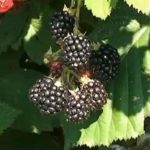Blackberries of the Chief Joseph variety are considered a unique crop. It got its name in honor of the leader of an Indian tribe in North America. The plant has high yield and endurance parameters. The culture easily adapts to climatic conditions and can withstand dry and hot weather. During the fruiting period, large black fruits appear on the bushes.
- Characteristics and description
- Pros and cons of Chief Joseph blackberries
- Landing rules
- Recommended timing
- Soil preparation
- Choosing a suitable location
- Selection and preparation of seedlings
- Algorithm and landing scheme
- Further care
- Watering and fertilizing the crop
- Shrub pruning
- Preparing for winter
- Diseases and pests of the variety
- Reproduction methods
- Harvest and storage
Characteristics and description
This variety of American selection belongs to the thornless crops. It was developed at the end of the 20th century by scientists at the University of Arkansas. The plant is characterized by the following features:
- Powerful semi-creeping shoots grow up to 3-4 meters. They are erect and can easily withstand loads. The branches are not damaged by the weight of ripe berries.
- The leaves cover the stems abundantly and have a rich green color. Along the contour they are covered with sharp teeth.
- The flowers are large in size and white in color.
- There are no thorns on the bushes.
- The root system is quite powerful.
- There is practically no growth. Most often, it grows back only after damage to the root system.
- The berries are distinguished by their rounded, elongated shape and rich black color. They are characterized by a shiny texture and large size. The fruits reach 25 grams in weight and form large clusters.
- Blackberries have a sweet taste with virtually no acid.
The first berries obtained from young bushes are usually not very tasty. However, the next year they acquire a bright taste and aroma.
Pros and cons of Chief Joseph blackberries
Landing rules
To growing blackberries was successful, it is necessary to carry out the landing work correctly.
Recommended timing
Blackberries need to be planted in the spring. Thanks to this, it will have time to take root and withstand frosts. When planting in autumn, it is recommended to carefully insulate the bushes. To do this, you should use dry leaves, spruce branches, and straw.
Soil preparation
Before planting, it is recommended to dig up the soil, level it and make holes for planting. In each hole you need to add 5-6 kilograms of humus, 100-150 grams of superphosphate and 50 grams of potassium compounds.
Choosing a suitable location
It is recommended to plant blackberries in a sunny area. However, partial shade is also acceptable. There is no need to plant bushes in shady places. A lack of heat and light will negatively affect the quality of the fruit. It is best to choose open and level areas, but seedlings can also be placed near small buildings.
Selection and preparation of seedlings
Young bushes 1-2 years old are suitable for breeding the variety. They must be healthy and free of damage. Before planting, blackberries need to be soaked in any growth stimulant.
Algorithm and landing scheme
To plant a crop, it is recommended to do the following:
- Dig up and level the soil.
- Make recesses for planting measuring 40x40 centimeters and 60 centimeters deep. The distance between holes should be 1.5-2 meters. The interval between rows is 2.5 meters.
- Place drainage from stones and crushed bricks at the bottom of the recesses. Sprinkle it with soil.
- Place the seedling in the hole and cover it with the nutrient mixture.
- Water and cover with a layer of mulch.
- Trim branches. There should be 1-2 buds left on them.
Further care
In order for a plant to grow and develop normally, it needs to be provided with proper care. It must be comprehensive.
Watering and fertilizing the crop
Young bushes need frequent watering. Adult plants do not need to be constantly moistened, since the variety is resistant to drought. If the soil around the bushes is covered with mulch, they need to be watered only in extreme heat.
For feeding, it is worth using complex mineral preparations. They should be applied in early spring, before buds break, before flowering and after fruit formation. In spring it is recommended to use nitrogen products, in the second half of summer - compositions based on potassium and phosphorus.
Shrub pruning
It is best to grow this variety on a trellis. If it is absent, the main shoots should be cut to 2-2.5 meters, and the side shoots to 1. In the autumn, after the end of the growing season, the shoots that produced a harvest are cut off at the root. In this case, it is necessary to leave only the young shoots of the current year. In spring and summer it is worth removing excess branches. Each bush should include 8-10 stems.
Preparing for winter
Before the arrival of cold weather, the bushes need to be covered. To do this, the branches should be carefully removed from the support, tied and placed on the ground. Place hay, straw, and leaves on top.
Diseases and pests of the variety
With proper care, blackberries are resistant to diseases and pests. Sometimes it suffers from rust. Preventive spraying with garlic infusion will help avoid problems. The same remedy helps to cope with pests - primarily aphids.
Reproduction methods
Blackberries of this variety should be propagated by layering. To do this, you need to place the tops of two-meter branches in the grooves near the bushes and sprinkle them with soil. This place needs to be watered abundantly. With the arrival of autumn, the cuttings can be separated and planted in a permanent area.
Harvest and storage
Fruits need to be collected in dry weather. They should be black in color and have a firm consistency. Ripe fruits can remain in the refrigerator for several days. Berries can also be frozen, dried, or used for preparations.
Blackberries Leader Joseph are distinguished by high yields and strong immunity. In order for the plant to develop normally, it requires high-quality care.

